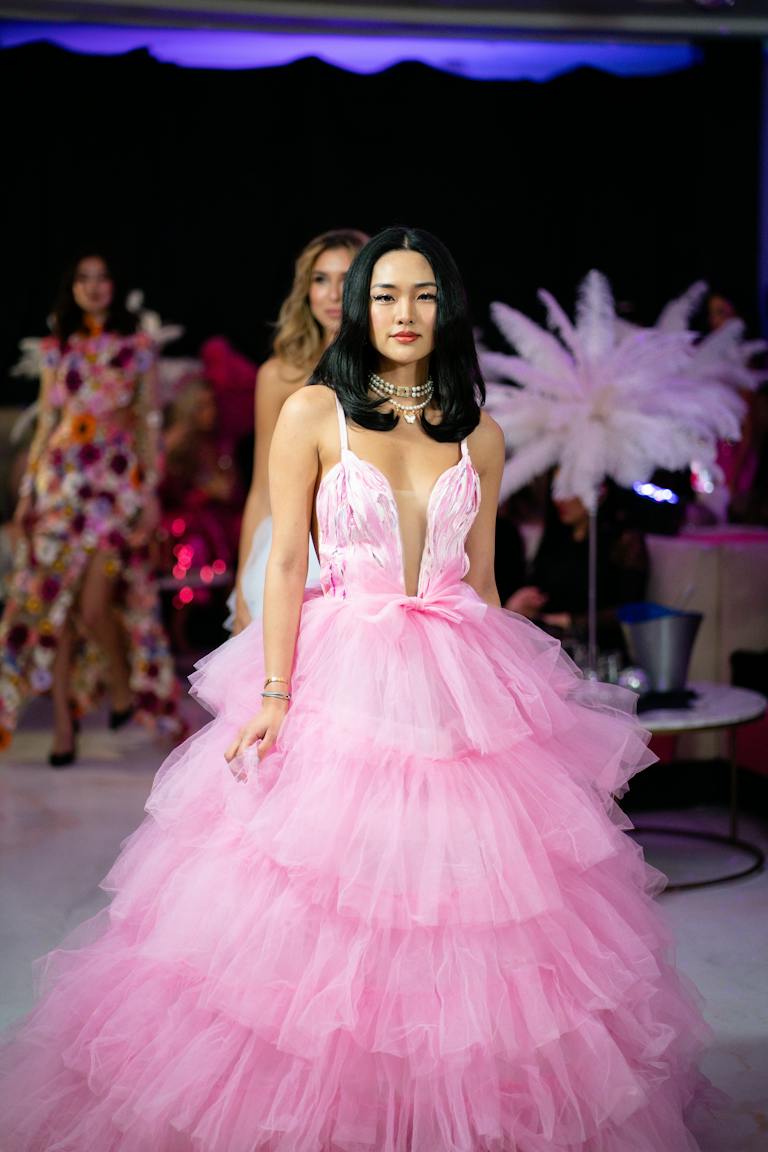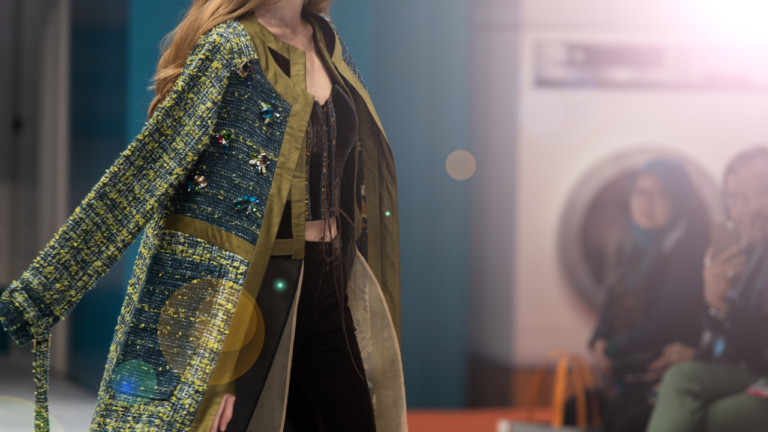Demna Gvasalia’s Habit Of Making Fashion Scandels
Demna Gvasalia, a prominent figure in the fashion industry, is renowned for creating designs that often spark significant controversy. His approach involves blending high fashion with everyday elements and injecting social commentary into his creations.
This has led to several notable scandals, such as the DHL T-shirt and the Ikea-inspired tote bag, which challenge traditional notions of luxury and provoke discussions about consumerism and the role of fashion in society. Gvasalia’s work, while sometimes contentious, plays a vital role in pushing the boundaries of fashion and redefining what is considered luxurious and fashionable.
Key takeaways
- Demna Gvasalia is a trailblazer in fashion, known for his provocative and unconventional designs.
- His work merges social commentary with fashion, challenging norms and redefining luxury.
- Gvasalia’s influence extends beyond fashion, impacting consumer perceptions and inspiring new design trends.
Background
Embed from Getty ImagesBrief Biography of Demna Gvasalia
Demna Gvasalia’s journey in fashion is as unconventional as his designs. Born in Georgia in 1981, Gvasalia’s early life was marked by the turbulence of civil war, which profoundly influenced his outlook on life and fashion. He studied International Economics at Tbilisi State University before shifting gears to fashion, enrolling at the Royal Academy of Fine Arts in Antwerp. This eclectic background laid the foundation for a design ethos that seamlessly blends practicality with avant-garde aesthetics.
Establishment of Gvasalia’s Brand: Vetements and His Role at Balenciaga
Gvasalia’s ascent in the fashion world began with the launch of Vetements in 2014, a collective he co-founded with his brother. The brand quickly gained notoriety for its unconventional designs and subversive approach to fashion norms. In 2015, Gvasalia was appointed as the artistic director of Balenciaga, where he infused the historic brand with a modern, edgy vibe, reinvigorating its global appeal. His work at Balenciaga has been marked by a fusion of streetwear sensibilities with high couture, a blend that has become his signature.
Overview of His Design Philosophy and Style
Demna Gvasalia’s design philosophy is deeply rooted in a desire to challenge and redefine the status quo. He often draws inspiration from everyday life, looking to people for regular inspiration.
He has been often dubbed the anti-fashion, in the world where WGSN controls all the fashion forecasts and orchestra of trending clothes, Demna Gvasalia’s clothes often spark controversy and completely go against the status quo. As the creative director at Balenciaga, he infuses luxury fashion with elements of the mundane and the utilitarian aspects.
As the co-founder of vehement, his approach was characterized by a mix of irony, humor, and social commentary, which often manifests in unexpected ways in his collections. He has brought this style to Balenciaga, whether it’s through exaggerated silhouettes, recontextualizing everyday objects, or incorporating elements of his personal experiences, Gvasalia’s style is always thought-provoking, often controversial, and unmistakably influential.
Major Controversies
Demna Gvasalia’s tenure in the fashion world has been marked by a series of bold, often controversial, design choices that have sparked widespread debate and discussion. In this section, we will explore three of his most notable controversies, shedding light on their impact on the fashion industry and public perception.
The DHL T-Shirt (2016)
Embed from Getty ImagesDescription of the Design
In 2016, Gvasalia’s brand, Vetements, unveiled a yellow T-shirt emblazoned with the DHL logo. This piece was a direct riff on the uniform of DHL delivery personnel, transforming a mundane, everyday item into a high-fashion statement. Priced at over $200, this T-shirt blurred the lines between luxury fashion and everyday workwear, challenging preconceived notions about value and exclusivity in the fashion world.
Public and Critical Reaction
The DHL T-shirt quickly became a polarizing topic. Some lauded it as a masterstroke of post-modern irony, a clever commentary on consumerism and the fashion industry’s appropriation of working-class aesthetics. Others criticized it as an epitome of fashion’s absurdity, questioning the ethics of elevating a basic uniform to luxury status with a hefty price tag. The controversy fueled conversations about the meaning of luxury and the role of context in fashion.
Impact on Fashion Norms
The DHL T-shirt was more than just a fashion statement; it was a catalyst for a broader trend of incorporating everyday items into luxury fashion. Gvasalia’s approach opened doors for other designers to explore similar themes, leading to a more inclusive and diverse understanding of what could be considered high fashion. This design played a significant role in the rise of ‘normcore’ and ‘anti-fashion’ movements, which celebrate the ordinary and overlook traditional luxury aesthetics.
Balenciaga’s ‘Ikea-Inspired’ Bag (2017)

Description and Comparison to the Original Ikea Bag
In 2017, Gvasalia, now at Balenciaga, released the Arena Tote, a blue tote bag strikingly similar to Ikea’s iconic Frakta shopping bag. Made from luxurious leather and priced at $2,145, this bag was a high-end echo of Ikea’s 99-cent utilitarian tote. The resemblance was uncanny, yet the Balenciaga version was recontextualized in a luxury format, challenging perceptions of value and design in fashion and consumer goods.
Discussion of Intellectual Property and Design Ethics
The Ikea-inspired bag sparked debates on intellectual property and design ethics in fashion. Critics questioned the originality and ethical implications of repurposing a widely recognized utilitarian design for high fashion. The Ikea bag is so iconic and widely used that it was immediately recognized when Balenciaga released it.
The Arena Tote and the DHL T-shirts show how Demna Gvasalia looks at what people on the streets wear and use often, on a daily basis. Taking inspiration from them and bringing it into luxury fashion, however he does it in a very blatant way.
The controversy also highlighted the complex relationship between inspiration and appropriation in the creative process, igniting discussions about the boundaries of design and the interplay between high and low culture.
Public and Industry Response
The public response was a mix of amusement, criticism, and admiration. Ikea responded playfully, highlighting the differences between the two bags in a humorous ad campaign.
This response was seen as a savvy marketing move, turning potential controversy into a positive brand moment. The fashion industry, meanwhile, viewed the bag as a quintessential example of Gvasalia’s disruptive approach, further cementing his reputation as a designer who challenges the norm.
The Paris Fashion Week ‘Mud Show’ (2022)
Concept and Execution of the Show
During Paris Fashion Week in 2022, Gvasalia presented a Balenciaga show unlike any other. Models walked through a mud-filled runway, embodying a raw, almost apocalyptic vision. This show, aptly dubbed the ‘Mud Show,’ was a stark departure from the typical glitz and glamour of fashion week. It was a bold statement on the messiness and chaos of the contemporary world, as well as a metaphor for resilience and perseverance.
Kanye West also made an appearance, his debut on the runway at this particular show dressed in all black.
Interpretations and Criticisms
The ‘Mud Show’ was subject to various interpretations. Some praised it for its artistic depth and commentary on current global challenges, such as climate change and political turmoil. Others saw it as a gimmick, an over-the-top spectacle with little substance. Critics also questioned the practicality and environmental implications of such a show, highlighting the potential wastefulness and ecological footprint.
Analysis of the Social and Environmental Messages
Gvasalia’s ‘Mud Show’ can be seen as a reflection of his broader commitment to addressing social and environmental issues through fashion. The show’s raw, unfiltered presentation served as a commentary on the often-ignored realities of environmental degradation and societal unrest. By bringing these issues to the forefront in such a visual and impactful way, Gvasalia used his platform to provoke thought and discussion on vital global issues.
Balenciaga Fall 24 Collection in LA: A Reflection of the City’s Fashion Essence
In the Fall of 2024, Balenciaga, under the ingenious direction of Demna Gvasalia, presented its latest collection in Los Angeles, California. This show, far from being just another high-fashion event, was a deep dive into the city’s unique fashion DNA, capturing the essence of LA’s diverse and dynamic style. Gvasalia, known for his acute observational skills and ability to translate societal narratives into fashion, turned his gaze towards the people of Los Angeles, drawing inspiration from the city’s vibrant street style and laid-back attitude.
Interpreting LA’s Fashion Codes
The collection was a masterful interpretation of Los Angeles’ fashion codes. Gvasalia skillfully wove together elements that epitomize the city’s style ethos, ranging from activewear influences to upscale daywear. The pieces showcased a remarkable fusion of casualness with luxury, a hallmark of LA’s fashion scene.
- Oversized Sneakers: Footwear in the collection included oversized sneakers, a trendy and practical choice that resonates with LA’s streetwear culture.
- Accessories in Hand: Models often held everyday items like a bottle, a shoe, or a phone, adding a touch of realism and relatability to the runway. This choice underlined the collection’s theme of practicality and everyday life.
- Natural Runway Dynamics: Breaking from traditional runway protocol, models walked side by side, engaged in conversation, emulating people taking a casual stroll through the streets of LA. This approach created an immersive experience, making the audience feel like they were observers of a day in the life of an Angeleno.
Balenciaga’s Fall 2024 collection in Los Angeles, under Demna Gvasalia’s creative direction, was more than a fashion statement; it was a cultural commentary. By looking towards the people of Los Angeles for inspiration, Gvasalia not only paid homage to the city’s diverse fashion identity but also reinforced the idea that fashion is a reflection of society and its people. The collection stood as a vibrant testament to the city’s unique style, blending the worlds of luxury fashion and everyday street style in a way that only Balenciaga could.
Critique and Analysis

Gvasalia’s Intent Versus Public Perception
Demna Gvasalia’s designs often elicit a wide range of reactions, reflecting a dichotomy between his artistic intent and public perception. Gvasalia has stated that his work is meant to provoke thought and challenge norms.
Public reactions have varied, with some perceiving his designs as profound statements on consumer culture, while others see them as mere publicity stunts. As the creative director of a luxury brand, people expect his work to contain a sense of prestige, however his work causes more public discourse and discussion than anything, whilst also getting it’s far share of admiration from people who enjoy his work.
This discrepancy raises questions about the role of the designer in shaping public discourse and the extent to which fashion can be used as a medium for social commentary.
Examination of Recurring Themes in Gvasalia’s Controversies
A closer look at Gvasalia’s work reveals recurring themes that are central to understanding his approach to fashion. These include a penchant for irony and satire, a tendency to blur the lines between high and low culture, and a consistent effort to redefine luxury. Gvasalia’s work often reflects a deep engagement with current social and cultural issues, using fashion as a platform to address topics like consumerism, environmental concerns, and the fluidity of identity.
Impact on the Fashion Industry and Designer’s Reputation
Gvasalia’s controversies have had a significant impact on both the fashion industry and his personal reputation. His boundary-pushing designs have influenced emerging designers and established brands alike, encouraging a more experimental and inclusive approach to fashion. Simultaneously, these controversies have cemented Gvasalia’s reputation as a designer who is unafraid to take risks and challenge the status quo, positioning him as a pivotal figure in the contemporary fashion landscape.
Defending Gvasalia’s Approach
Despite the controversies, there are strong arguments in support of Demna Gvasalia’s unconventional approach to fashion design.
Arguments in Favor of Gvasalia’s Boundary-Pushing Designs
Supporters of Gvasalia argue that his work represents a necessary evolution in the fashion industry, pushing it towards greater creativity and relevance. They applaud his ability to merge social commentary with fashion, highlighting issues like consumerism and environmental awareness. Gvasalia’s approach is also seen as a democratizing force in fashion, challenging elitist notions of luxury and bringing high fashion into a more accessible realm.
He speaks to many people through his fashion, acknowledging the subsection of people that WGSN fails to recognize in their trend forecasting, is that many people just want practicality, comfort, or simply do not care what they look like at all.
Many of Demna’s most iconic work are not what one would consider wearing to a party, meeting with family, but instead it’s eye catching street style that sparks a conversation. Especially political, environmental conversations.
The Role of Controversy in Advancing Fashion Discourse
Controversy, as sparked by Gvasalia’s designs, can be a powerful tool in advancing fashion discourse. It fosters debate, encourages diverse perspectives, and challenges traditional norms, all of which are essential for the growth and evolution of the fashion industry. Gvasalia’s work prompts discussions that extend beyond fashion, touching on broader cultural and social issues.
Contributions to Sustainability and Social Commentary in Fashion
Gvasalia has been instrumental in bringing sustainability and social issues to the forefront of fashion. His designs often incorporate sustainable materials and practices, reflecting a growing awareness of fashion’s environmental impact. Moreover, by embedding social commentary into his designs, Gvasalia raises awareness about critical issues, using fashion as a platform for advocacy and change.
The Broader Impact of Gvasalia’s Controversies
The controversies surrounding Demna Gvasalia’s work have implications that extend far beyond the immediate reactions they provoke.
Influence on Upcoming Designers and Fashion Trends
Gvasalia’s influence on the next generation of designers and emerging fashion trends is undeniable. His approach has inspired young designers to experiment boldly and to infuse their work with personal, political, and social commentary.
This influence is evident in the increasing diversity of styles and narratives present in contemporary fashion, as well as in the growing emphasis on sustainability and ethical production.
Changes in Consumer Perceptions and Expectations
Gvasalia’s work has also played a role in shifting consumer perceptions and expectations regarding fashion. Consumers are increasingly seeking designs that are not only aesthetically pleasing but also carry deeper meanings or messages. There is a growing appreciation for fashion that challenges norms, promotes sustainability, and reflects individual identity and values.
Storytelling and Emotional Connection: He often imbues his designs with personal stories or broader social narratives, making the emotional and conceptual value as important as the physical product. This has shifted the focus from mere aesthetics and craftsmanship to the stories and ideas behind luxury items.
The Evolving Definition of Luxury Fashion
Perhaps one of Gvasalia’s most significant impacts has been on the evolving definition of luxury fashion. His work challenges traditional ideas of luxury, suggesting that it can be found in the recontextualization of the mundane and in the craftsmanship and story behind a design, rather than just in exclusivity and price. This shift has broad implications for how luxury is understood and consumed in the modern world.
Pricing Strategy: By charging premium prices for items that are conceptually provocative but not traditionally luxurious (like a T-shirt or a tote bag), Gvasalia has redefined the factors that contribute to the ‘luxury’ price tag.
Conclusion
Demna Gvasalia’s impact on the fashion industry is undeniable. Through his controversial yet innovative designs, he challenges traditional concepts of luxury and fashion, sparking important conversations and inspiring a new direction in the world of fashion. His unique approach not only reflects current societal issues but also sets the stage for future trends and discussions in the industry.
FAQs
What are some notable controversies caused by Demna Gvasalia?
Key controversies include the DHL T-shirt, the Balenciaga ‘Ikea-inspired’ bag, and the ‘Mud Show’ at Paris Fashion Week, each challenging perceptions of luxury and design.
How has Demna Gvasalia influenced the fashion industry?
Gvasalia has influenced the industry by promoting a more experimental and inclusive approach to fashion, blending different cultural elements and addressing social issues.
What makes Demna Gvasalia’s approach to fashion unique?
Gvasalia is known for blending high fashion with streetwear, infusing his designs with irony, social commentary, and a redefinition of luxury.






